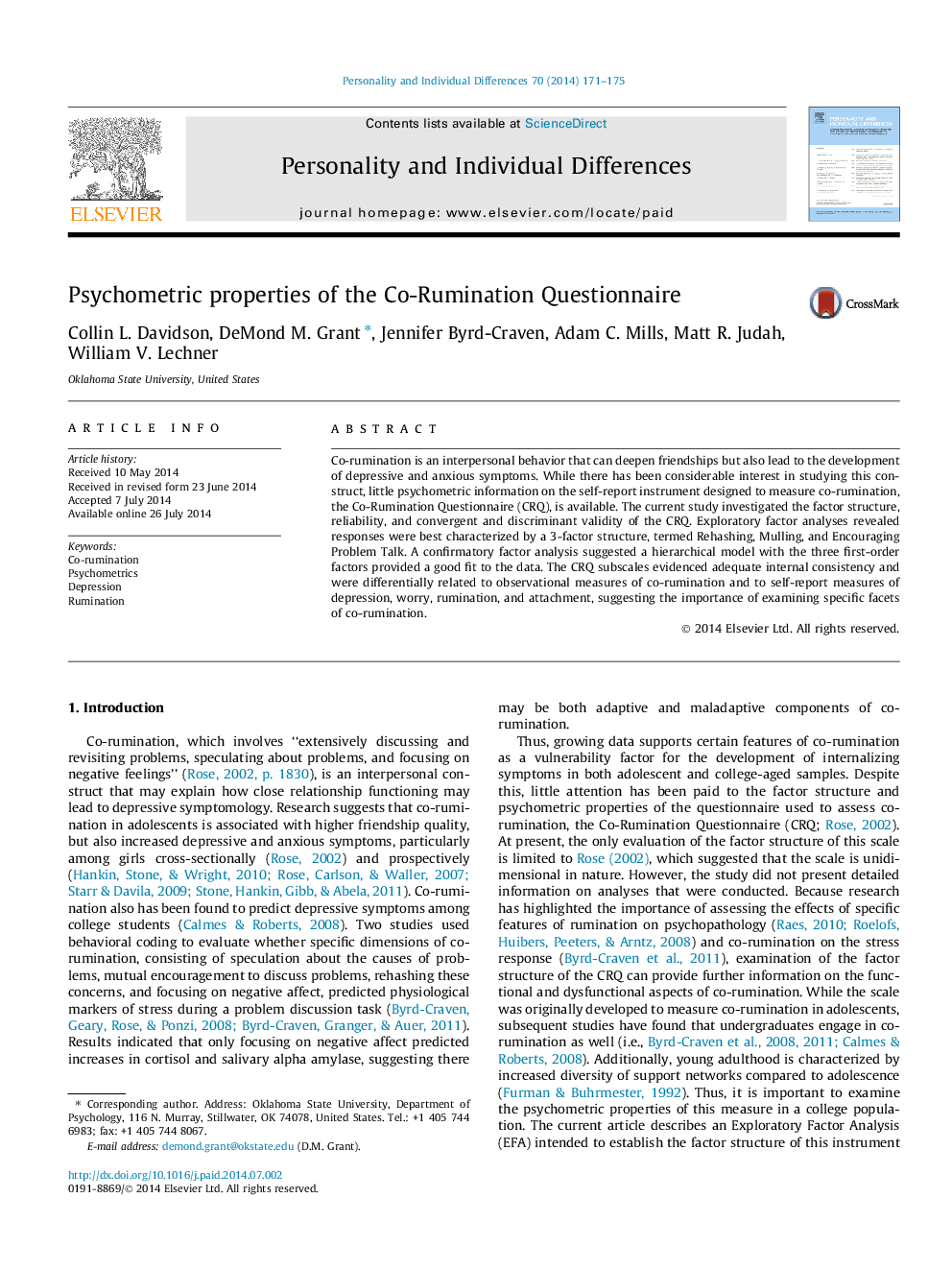| Article ID | Journal | Published Year | Pages | File Type |
|---|---|---|---|---|
| 890334 | Personality and Individual Differences | 2014 | 5 Pages |
•Examined the psychometric properties of the Co-Rumination Questionnaire.•Found support for a three-factor structure: rehashing, mulling, encouraging problem talk.•Results supported discriminant validity of the subscales.•Study suggests may be adaptive and maladaptive aspects of co-rumination.
Co-rumination is an interpersonal behavior that can deepen friendships but also lead to the development of depressive and anxious symptoms. While there has been considerable interest in studying this construct, little psychometric information on the self-report instrument designed to measure co-rumination, the Co-Rumination Questionnaire (CRQ), is available. The current study investigated the factor structure, reliability, and convergent and discriminant validity of the CRQ. Exploratory factor analyses revealed responses were best characterized by a 3-factor structure, termed Rehashing, Mulling, and Encouraging Problem Talk. A confirmatory factor analysis suggested a hierarchical model with the three first-order factors provided a good fit to the data. The CRQ subscales evidenced adequate internal consistency and were differentially related to observational measures of co-rumination and to self-report measures of depression, worry, rumination, and attachment, suggesting the importance of examining specific facets of co-rumination.
